Your full name, and university course/year.
Erin Shields, 3rd Year, Fine Art with History of Art
What medium do you prefer to use?
I like using various combinations of Digital and Handwritten Ink on Paper
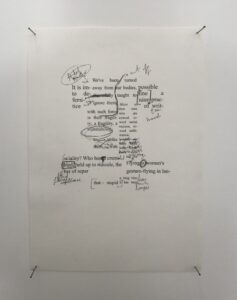
What is the inspiration behind your work?
The main inspiration behind my work is feminism and artistic feminist practices. I aim to investigate the simultaneous intimacy and publicity of women’s lived experience. Through my works I try to disrupt the linear performance of reading and looking at my works to re-figure the audience from a female point of view. By breaking up, editing, re-ordering texts I want to shift the way that viewer’s enter and view a gallery space. My aim is for them to perceive works through their own personal experience of reading written language which responds to my own, female, point of view.
What is your most important artist tool? Is there something you can’t live without in your studio?
I’d say I can’t live without a pen and a sketchbook in the studio, without those I don’t think I’d be able to create anything at all! Although a lot of my work utilises the digital, I think its foundations lie in the handwritten. My work tends to formulate through sketches/ writings/ scribbles first and then I work them through in various mediums
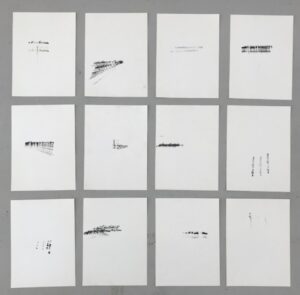
During this uncertain time what will you do to occupy yourself?
I think now is a great time to be able to sit down and think about issues in my practice that I’ve been trying to tackle for a while but haven’t had the time to resolve yet. I’m also hoping to be able to get some yoga done and some more reading, Uni takes up so much time it’s sometimes hard to do things for yourself. This time will (hopefully) never come again so I’m going to try and do all the things I’ve been putting off.
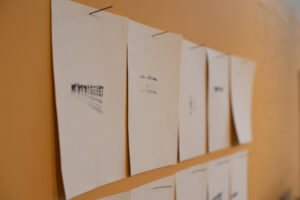
Which artists are you most influenced by?
I have a few major inspirations behind my work. First and foremost, feminist writer and philosopher; Helene Cixous. Her seminal essay ‘The Laugh of Medusa’ is one of the most interesting and important pieces of feminist writing that came out of first wave feminism. I use that text as a basis for most of my pieces, I then pull it apart, manipulate it or respond to it in various different mediums. I am also inspired by text artists working with Concrete Poetry and A-Semic writing, particularly Susan Howe and Erica Baum. I am really interested in the way that they see language as an art form and the way that they push text to its limits through their works. At the moment I am also interested in Nancy Spero and her ‘Codex Artaud’ series. Her works investigate the associative power and narrative potential of text and image working together which is something I would like to incorporate into my practice. Finally, I am largely inspired by Moyra Davies’s ‘The Wet and the Dry’ which inspired me to start to bring performative elements in my work through semi-instructional text pieces.
How do you seek out opportunities?
I tend to look for opportunities on the Curator Space website which is amazing for emerging artists looking to take part in exhibitions, residencies, online engagements, publications and collaboration work. Also, the University does provide various opportunities which I research and look into if I think my work fits.
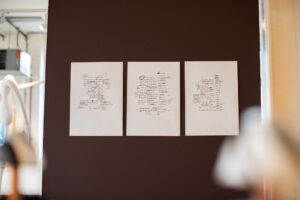
Which current art world trend are you following?
In terms of trends I don’t think I follow anything in particular, I just like to keep up to date on anything that is going on which can be a real task. Due to the current climate I am keeping up to date with the Art Market in particular. I am interested to see how lockdown will affect the way which we buy/consume/experience art. I’ve seen a lot of galleries attempting to go digital and making exhibitions free. It will be interesting to see if these changes stay in place after the lockdown is over, and if pay-walls for galleries will be put back up or how consumers will react to this.
Plans for the future?
I am supposed to be starting a Master’s in History of Art at Leeds University in September which I’m really excited to start on. I am still however going to keep making, applying to and putting on exhibitions. I am also hoping to be able to organise and curate exhibitions in the future.
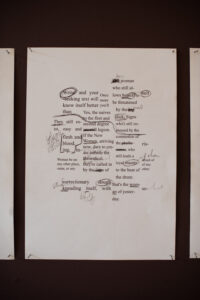
Tell us about an exhibition that has stayed with you
I really enjoyed the Van Gogh: Immersive Experience at York St Mary’s which was on over Christmas. Obviously, there are so many Van Gogh exhibitions all over the world, all the time it was refreshing and interesting to be able to experience his works in a new way that was exciting and creative. The projections, paired with music that was composed in response to his paintings was so engaging I felt like I was completely immersed within the works themselves. I was able to catch tiny details in the paint that I never would have been able to see in a packed gallery space who are all trying to crowd around one painting at once. The space itself, a church, was equally a really interesting space. The pillars and windows allowed the paintings to shift and move in different ways that really challenged the viewer’s way of experiencing his work.
Any books/ films/tv series that you’d recommend for anyone interested in art?
My absolute favourite show to watch is a documentary series that was on the BBC a few years ago, but it is all currently on BBC iPlayer; A History of Art in Three Colours, presented by Dr James Fox. It was what made me want to do a Fine Art with History of Art degree! I would really recommend watching it if you are interested in art or not as it shows you the journey of different colours, their usage throughout art history and how each colour has come to mean different things.
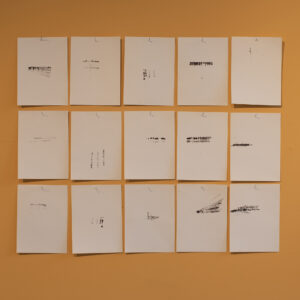
What are your favourite Instagram accounts?
My current favourite Instagram accounts are @thesocialdistnaceartproject and @lighthouse.collab both are working to show and promote Final Year art students from across the country in response to the cancellation/postponing of Degree Shows for 2020. It’s amazing to see the work that’s being done and a community of artists working together to promote each other.
What is your dream project?
My dream project, it’s difficult to say as I think there’s so many different things I want to do. I would love to be able to work towards or curate an exhibition that celebrates female artists not just because they are female. I feel like so many major exhibitions at large galleries always have to put emphasis on the fact that its an exhibition about ‘women’ artists, rather than just artists. Although I know that all of these artists are proud to be women, as am I, I want to work towards a change so that ‘women’ artists aren’t seen as an outsider to the art historical canon, instead they are just a part of it and that is what people learn about rather than this separation that is still very apparent in major institutions.
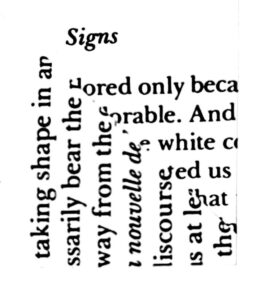
What is your most successful piece of work and why?
In terms of successful works, I think it is hard to judge. Over time my own interests shift so a work that I once though was successful may not be now. Currently my favourite piece of work and one that I want to continue investigating is a piece that is in the Ones to Watch exhibition called ‘Metamorphoses’, even since submitting the piece the title has changed to ‘metamorphoses of the past, present and future’ and I am currently working on the 3rd iteration of it. It consists of broken up text from Helene Cixous’ ‘The Laugh of Medusa’ which I have manipulated digitally and have then further edited through handwritten interventions. I find this piece challenging because no matter how many times I try and reproduce it, it will always be different. For the viewer, they must contend with multiple layers of my physical experience of reading the text.
Firstly, I chose quotes, then manipulated them, cut them up or took pieces away. I then print it out to respond to my own manipulations and try to make further notes and meanings. The reader is then left to make sense of the marks that I have left there, and they must respond physically to the text on the page. I feel like there is also a simultaneous control and lack thereof in the making of each piece due to the nature of digital manipulation vs handwritten. I am also playing with the intimacy and publicity of my own experience as a woman, reading a text by a woman, and then responding as an artist. My own reading experience is publicised in the gallery space, however the viewer can never directly understand this experience, as their own personal experience comes into play at the same time, creating an intimacy between me and the viewer and the viewer to the work itself. This work will continue to challenge me and I hope to challenge viewer’s who are able to experience it.
Find out more about Erin’s work here.
Read about all the Ones to Watch artists here.
Back To Blog Next (Ones to Watch: Interview with Sarah Larby) Prev (Ones to Watch: Interview with Catherine Morgan)Tags
General Arts & Culture
